Nerds That Geek Comic Book Review - 'Moon Knight' (2017) #189: 'Crazy Runs In the Family - Part 2'11/30/2017 Written by Joel T. Lewis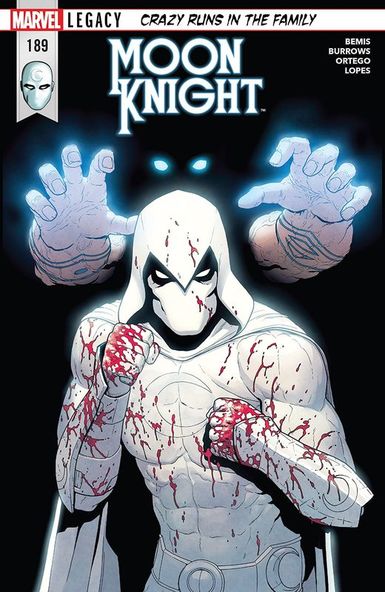 I’m not sure if it stems from my unbridled fandom of Moon Knight, or Max Bemis and Jacen Burrows are just that good, but Moon Knight delivered another incredible issue this month. Beginning with a cold open introduction to a new villain calling himself the Truth (readers of my last Moon Knight review will forgive my mislabeling of the previous issue’s villain as the Truth as I have found out recently that patient 86’s villain name is the Sun King) and concluding with the surprise reveal of an old rogue’s gallery favorite, Bemis and Burrows have done it again. In an issue that introduces the Moon God Khonshu as a, dare I say it, whimsical narrator, Bemis maintains the poignant and playful tone of the previous issue. We are reintroduced to Moon Knight’s Steven Grant persona, who Bemis has described as an investor and entrepreneur, rather than the Hollywood movie producer that Lemire had built him up to be. Even after the lengthy sabbatical that he had taken while Spector sought the therapy he needed to accept rather than resent the aspects of his mental condition, Grant managed to double his own wealth in addition to boosting his corporation’s already healthy bottom line. The next few panels show us that every cent of Grant’s gains from his fancy stock footwork is going straight to a charity fund for New York’s displaced young people, a fund called the Lunar Lives Fund. Seeing the effects of the Truth’s attack on the subway on the TV at Grant’s corporate celebration, he rushes off to investigate. In this section Jacen Burrows artwork really shines. The combination of his pencils with newcomer (at least to Moon Knight anyway) Inker Guillermo Ortego just leap off the pages. Burrows crafts some soon-to-be classic Moon Knight panels and just nails the character design across the board; in motion, covered in blood, shrouded in darkness, he’s just so spot on. I enjoyed the subterranean panels in particular because of the tone shift colorist Mat Lopes was able to achieve as Moon Knight moves through the low light of the subway tunnels. Moon Knight meets and tussles with the Truth in the cavernous tunnels, stumbling slightly as the villain attempts to subdue his mind to his will. The Truth’s powers, though effective at imposing his will and warped view of the world as unworthy of continuing on the citizens of New York, he finds himself unequal to the task of overpowering a mind as crowded as Marc’s. Though Marc, Steven, and Khonshu are unable to resist the Truth’s prying mental manipulations, once he transitions to his Jake Lockley persona, Moon Knight dispatches the villain quickly. When Jake takes over, Moonie pulls back his hood and uncovers his mouth, a variation on the Mr. Knight identity introduced in Secret Avengers (2012) no. 19 by Warren Ellis and Michael Lark, which would be brought to the forefront of the Moon Knight solo title by Ellis in 2014. The Truth’s terror at the ‘truth’ he finds in Jake’s head disarms him enough that he leaves himself open to double crescent moon darts plunged into his eyes. But not before revealing that perhaps Lockley has been keeping his more gruesome actions secret from Marc and his other identities. The ambiguity of Marc’s sanity and grip on the actions of his segmented personality is a classic element of Moon Knight stories and I’m really fascinated by the notion of Jake, rather than Khonshu, using his position inside Marc’s head as a vehicle for carnage and chaos. It will be really interesting to see how the Marc/Jake dynamic plays out in the issues to come. 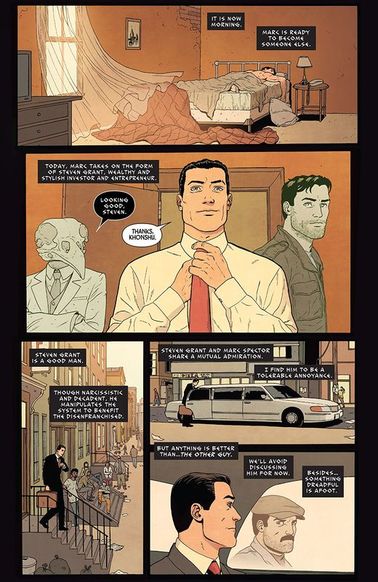 Interspersed throughout the issue are panels that follow the mysterious patient number 86 from the previous issue, (also known as the Sun King) on his search for a faceless Drug Lord. As the Sun King moves through the New York underworld, gaining information through his charisma and power over fire, the contrasting color scheme of the panels mirror the otherworldliness of his character, and the nature of his powers. The gray tinge that all other characters have in these panels contrasts beautifully with the fiery orange aura that Mat Lopes gives the Sun King. Finally, as the Sun King finds the elusive Drug Lord he’s been searching for, Bemis and company reveal the mystery man to be an overweight, sweatpants wearing Raoul Bushman. This was a surprise. Especially considering my respect and fear of Bushman, seeing him let himself go, was a little disheartening. This is a man who slaughtered villages without prejudice and would bite out people’s throats with relish, so to see him drawn pudgy and wearing track pants made me a little sad. I am really curious to see how he will work in conjunction with the upstart Sun King, and also whether or not Bemis will fill us in with what Bushman’s been up to since Spector’s rebirth and how he came to let himself go so dramatically. Bemis’ interpretation of how Marc interacts with his separate personalities, and his characterization of Khonshu in particular is fascinating. By showing ghostly representations of his other personalities as they speak to each other, Bemis has laid out an easily followed road map to Marc’s psyche that helps the reader understand who’s speaking to whom and where Marc is in terms of his control of a situation. Also, when Marc addresses Jake saying, ‘What was he talking about Jake? This is exactly what we agreed not to do! We will talk about this later.’ His tone is like that of a frustrated father, trying to rein in an unruly child, which is a very interesting dynamic for those two personas to share. Khonshu as a narrator is almost cheerful, complimenting Steven Grant and commenting on his dislike of the Jake Lockley persona. It’s almost as if Bemis has modeled the vengeful god in his version on Batman’s Alfred; he’s snide, knows his avatar perhaps better than he knows himself (or selves), and, thus far, has only spoken or acted in an observational and advisory capacity. I don’t think this is the wrong direction for the character, but it seems to disarm him a bit, which might be the point. Gone are the days that I forget what Khonshu is and has always been; manipulative, vengeful, and unpredictable. I certainly learned my lesson about underestimating him from the last series. More remarkable than the levity and personality that Bemis brings through his narration of the issue, is that he’s nailed the old school Moon Knight quippy-ness of Doug Moench’s original series without it feeling out of place or dated. Moon Knight addresses the Truth before attacking him, ‘You. Before I knock you out, tell me…do you need to be called anything?’ This sounds like a classic Moon Knight line, but it’s updated to show that while Moon Knight couldn’t care less what the Truth calls himself, he understands that a villain with a persona craves to be labeled as such. And Moonie is happy to oblige before punching him in the face. Burrows and Bemis continue to do right by Moon Knight and I’m sad that after this issue they’ll be returning to releasing only one issue a month. Alas, I shall have to wait. Until next time, Geek On!
0 Comments
Written by Zeke Perez Jr.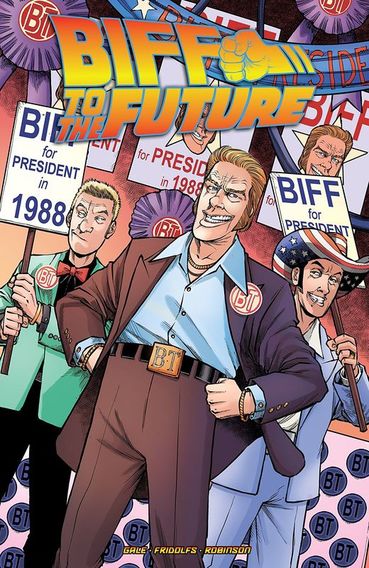 Great Scott! You missed the Biff to the Future comics as they were released?! Luckily for you, you don’t have to punch ‘January 2017’ into the time circuits of your DeLorean to go back and get them. IDW is releasing the trade paperback for the six-issue run today! If you love the Back to the Future trilogy as much as I do, you’ll want to pick it up. Biff to the Future is a tremendous addition to BTTF lore, expertly filling in the details of the 1985A or Biffhorrific timeline where Biff Tannen takes control of Hill Valley. The series is written by Derek Fridolfs and BTTF co-creator Bob Gale, with illustrations by Alan Robinson who worked on the Back to the Future: Citizen Brown comics. As is the case with other BTTF offshoots and projects, Gale’s involvement ensures its authenticity, keeping it true to the original story. But the beauty of the BTTF story - one filled with countless timelines and alternate universes shifted by even the slightest of details - is that it is so open and expansive. You can let your imagination run wild considering all the intricacies and outcomes that the movies don’t cover. In this case, the comics do a great job of enriching an already well-developed series with brilliant new ideas. Biff to the Future starts during the moment old Biff gives young Biff the infamous Grays Sports Almanac back in 1955. It follows the rise of the Tannen empire, examining how Biff used the almanac to grow his wealth, build Biff Tannen’s Pleasure Paradise (featured in Back to the Future II), and terrorize the town and the McFly family. A cast of familiar characters try to stop his evil pursuits. 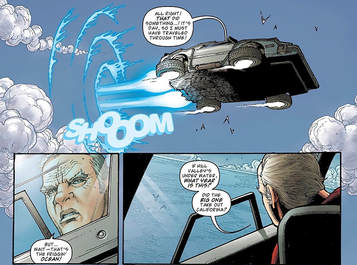 The scope of his story reaches far beyond the small Hill Valley, with implications for the United States. For instance, Biff only manages to build his casino with a little tit-for-tat favor for President Nixon, allowing gambling to be legalized in California…but only in Hill Valley. That’s just one of a handful of hilarious history-altering moments that take place. The series covers a lot of ground in just six issues, and frankly I felt like it could have gone on for a few more. Although all the loose ends are tied by the end, the conclusion in the final issue feels very rushed. Nevertheless, the buildup of Biff’s rise is perfect, teetering between humorous and dark. Most every character from the movies is seamlessly woven in. It truly feels like it could be an extended cut of the second movie. If you’re a BTTF fan, this series is a must-read. Even if you haven’t yet read the other BTTF comic series, this one stands alone and is a good, short series to start with. The second movie was great because it showed all the amazing things that the future could hold, juxtaposed against the wreckage of a Biff Tannen-centric future. With a deep storyline and Easter Eggs galore, Biff to the Future allows the reader to spend more time in 1985A; something many have longed to do. If you want to go back to that particular future right now, hurry to your local comic book shop and pick up the Biff to the Future trade paperback! Well…? What are you waiting for, butthead?! Nerds That Geek Comic Book Review - 'Moon Knight' (2017) #188: 'Crazy Runs In the Family - Part 1'11/9/2017 Written by Joel T. Lewis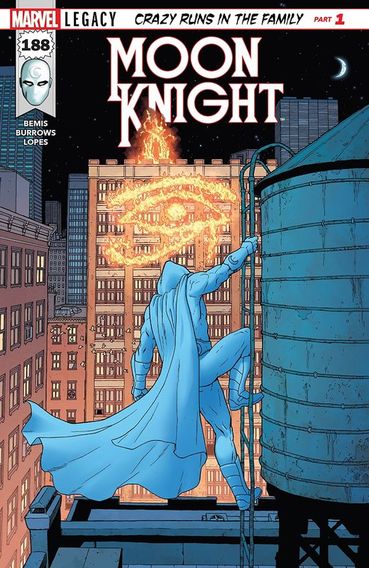 I thought I would never love again. I had honestly convinced myself that nobody could fill the void left by the departure of Jeff Lemire and Greg Smallwood from the Moon Knight series. I was sure that no matter how good Max Bemis and Jacen Burrows’ version of the Jet and Silver Avenger was it would feel like a shadow of the former series. Now you can say what you want about Marvel misunderstanding the trends of the comic industry, you can speculate about the impact of an industry titan like Brian Michael Bendis transitioning to write for DC, you can even take issue with the whole philosophy behind the newest Marvel Legacy and Venom Universe events, but reader rest assured: when it comes to Moon Knight Marvel is firing on all cylinders. Say Anything front man and budding comic book storyteller Max Bemis and Avatar Press regular Jacen Burrows pulled off a gutsy and spectacular first issue of their ‘Crazy Runs in the Family’ arc. Bemis’ first issue focuses on the mysterious origin of the newest addition to the Moon Knight rogue’s gallery, a villain called the Sun King from the perspective of Dr. Emmet, the therapist we met in Lemire’s run. While Bemis addresses Emmet’s obsession with Spector and his unique neuroses after their interactions in the previous series, Moon Knight himself is absent from the issue and only appears in a dream sequence. Now the dream sequence is outstanding and terrifying as it depicts a horde of mummies foiled in their attempts to attack Dr. Emmet by a Moon Knight who turns out to be the Sun King in disguise, but it’s pretty risky move to open a brand new Moon Knight series without the title career appearing at all. In this case, it was a risky move that paid off. 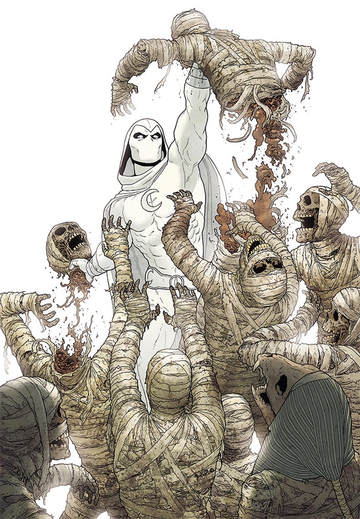 By depicting Dr. Emmet’s obsession with Spector and detailing how she uses him as a case study for trying to help her other patients, Bemis managed to put together an origin story for the Sun King that acts as a dark echo of Moon Knight’s birth. Dr. Emmet’s misguided attempt to provide her mysterious new patient with an Egyptian God metaphor to cling to as a stabilizer the way she thought Spector did with Khonshu leads to the birth of the Sun King. It’s almost the neurological equivalent of scientists trying to recreate the super soldier serum that made Steve Rogers Captain America and creating other superheroes. Emmet’s introduction of the Egyptian mythology as an anchor for her patient backfires and instead of mirroring Spector’s progress, the Sun King chooses, rather violently, a more extreme path. This is a villain origin story so well suited to Moon Knight and so unique that Moonie’s absence from the pages of the first issue doesn’t diminish it in the slightest. I have to apologize dear readers as we embark on this second Moon Knight series together because, barring some major misstep down the line, you’re going to be subjected to another series of reviews from a gushing mess of a fan boy who was lucky enough to turn his reviewer’s gaze on Moon Knight during the character’s 2nd renaissance. Bemis has thoroughly impressed me with this first issue. His writing is a delicate balance of playful and poignant handling Emmet’s practiced bedside manner skillfully in one panel, and doling out insightful interpretations of Egyptian mythology in the next. Artist Jacen Burrows is no slouch either. In this first issue Burrows presents us with his take on Khonshu, Ra, mummies, blood-stained asylum walls, Moon Knight himself, and a whole lot of fire. His work is excellent and the page-sized depiction of Moon Knight fighting off the mummies in Dr. Emmet’s dream is one of my favorite moments in Moon Knight artwork period. This is a great jumping on point for the character and I cannot recommend it enough. I can’t wait for the next issue! Until next time, Geek On! Written by Joel T. Lewis Now that we have come to the conclusion of the Jeff Lemire Moon Knight series, I am curious to see where the series will go next. With no solid plans for continuing the current run, the possibilities for the jet and silver avenger’s future are numerous. While Brian Michael Bendis has confirmed that Moonie will appear in the upcoming Defenders series (which will feature the Netflix series lineup of Jessica Jones, Luke Cage, Iron Fist, Daredevil, and the Punisher) it’s unlikely that this Moon Knight will be a continuation of Lemire’s character arc. Also, since Bendis led Moon Knight down a one-man Avengers wormhole in his 2011 Moon Knight series I’m unsure that his incorporation of Moon Knight into the Defenders will be the right fit, at least for me. That being the case, there are a number of directions that the character could go in the upcoming solo title. Marc Spector: Mercenary  Since the outstanding 2016-17 Black Widow title has come to a close, the widely talented creative team of Mark Waid, Chris Samnee, and Matthew Wilson will potentially be available to take the reins of Moon Knight. As I mentioned in an earlier review, an interesting direction for the next Moon Knight series would be to chronicle Marc Spector and Frenchie DuChamp’s time as soldiers of fortune before Spector became Moon Knight in a series called Marc Spector: Mercenary (a call back to the 1989 Moon Knight series: Marc Spector: Moon Knight). The Black Widow team is more than capable of handling an international Black-Ops style narrative and it would be awesome to see their exceptional action panel work trained on a young Marc Spector. This would also be a great vehicle for examining DuChamp and Spector’s friendship and DuChamp’s identity, origin, and romantic feelings for Spector (we learned in the 2006 MK run by author Charlie Huston, that Frenchie identifies as a gay man and was in love with Spector for much of their friendship). This series wouldn't be retreading much ground because Lemire is really the only author to focus on this period of Moon Knight’s history and he only lingers for an issue or two so there is plenty of time to play with creatively. It would also be a great vehicle for building an international underworld where characters like Bushman, Arsenal, and Randall Spector can develop and intermingle with Frenchie and Marc. Female Representation and Moon Knight: Year One 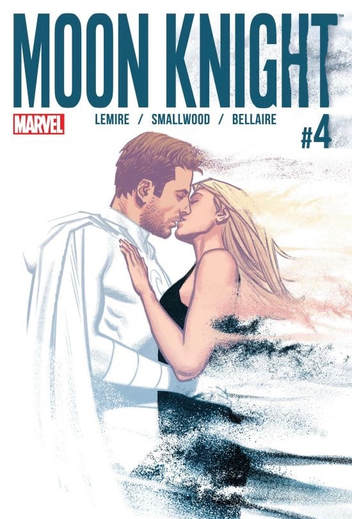 Sadly, the publication history of Moon Knight leaves much to be desired in the category of strong female characters. Gena and Marlene, who feature the most frequently, have not been developed much over the course of Moon Knight’s history. Gena is a good mother who works long hours at her diner to provide for her children, but in most appearances she trades stock dialogue with Jake Lockley and enters only to provide exposition. She is a strong single mother who owns her own business and I'd love to see some more storylines about her and her sons. But perhaps more egregious is how undeveloped Moon Knight's long-standing love-interest Marlene Alraune has been. Marlene has served as damsel-in-distress, eye-candy, and emotional stabilizer for Marc Spector throughout the history of Moon Knight comics. It is high time that she is treated to some serious character development and there are several avenues that could be explored. We never really see Marlene cope with the trauma of her father’s murder by the Bushman and a Moon Knight: Year One type series could really focus on her desire for vengeance and closure as she and Moon Knight track down Bushman. Even introducing codependency in the relationship between Marc and Marlene would give their on-again-off-again story arcs some added weight instead of inspiring repetition fatigue. Bonding them through trauma (Marc with his near-death experience and Marlene with her father’s violent death) would give their relationship a dysfunctional realism that would justify the forces that keep them together and pry them apart. Charlie Huston briefly explores Marlene’s rage and capacity for violence in issue 13 of his 2006 series and I would love to see that side of the character evolve in the future. Even on the villain side of things, Moon Knight is lacking in female representation. Bushman, Arsenal, Midnight, and Morpheus are compelling, campy, and terrifying in their own way, but one of the most underused Moon Knight villains is Stained Glass Scarlet. With a rich backstory of abuse, faith, and shifting perceptions of morality, Scarlet appeared in 12 Moon Knight issues between 1980-1998 and the crossbow-toting femme fatale hasn’t been seen since. Again, a Moon Knight: Year One would be a great showcase for this complexly motivated villain to go up against a rookie Moon Knight who’s still defining the boundaries of his vigilante justice. What If? 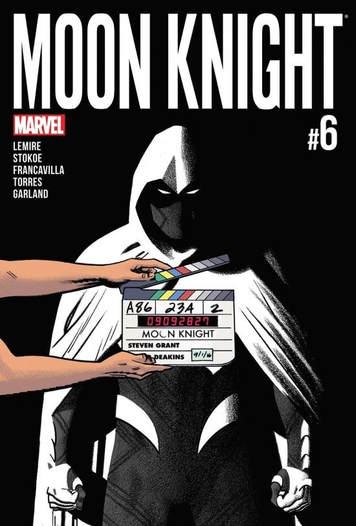 The Marvel What If series which explores alternative results to major comic events or bizarre exchanges of established character’s powers has never featured Moon Knight specifically, but there are some interesting 'What If' scenarios that would be cool new directions to explore for Moon Knight. It would be interesting to give Marc Spector a break for a bit and write an alternative history where Marlene Alraune is left for dead by Bushman in the desert wastes of Sudan and resurrected by Khonshu. Marlene Alraune: Moon Knight would be a great opportunity to rebrand the character and give Marlene some depth and development. Another rebranding direction would be to explore Raoul Bushman: Moon Knight. Ever since I read issue 6 of the 2006 Moon Knight series, I’ve been fascinated by the notion that Khonshu considered choosing the vicious Bushman as his warrior priest instead of Marc Spector. A storyline following the carnage that would follow Bushman becoming Moon Knight would be reminiscent of the Marvel Max era and could run along similar lines to what Venom has explored over the years. The greed and inhumanity that we love to hate about Bushman would clash with the desires of the Moon God and conversations between the two would be violently satisfying. Marc Spector: Space Knight 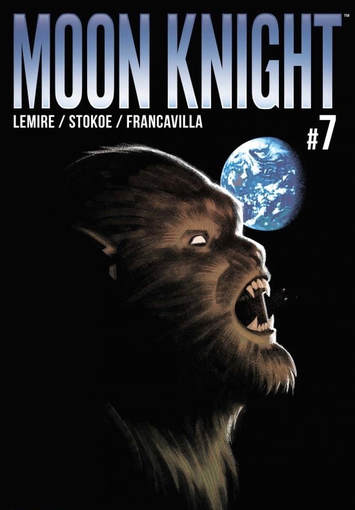 Jeff Lemire laid the groundwork for an epic Moon Knight series set in space with the Captain Marc Spector identity introduced in the 2016 run. A space Moon Knight series would be a great jumping on point for new fans, or a great continuation for fans of the most recent series and could take a primarily street-level brawler into the cosmic realm of the Marvel universe. This series, set after a Werewolf Apocalypse on earth, would make for some interesting intergalactic run-ins, maybe with the Guardians of the Galaxy or Thor and Loki. Also, this could set up some interesting storylines for Khonshu as an Othervoid creature with a cosmic history. Wherever Marvel decides to take Moon Knight in the coming months, I am along for the ride and really excited to see what comes next. Until next time, Geek On! Written by Joel T. Lewis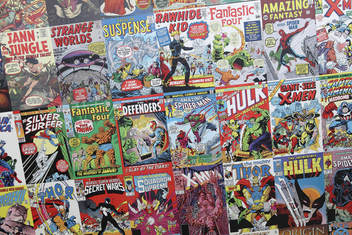 There are a lot of comics out there and honestly there’s a lot of quality storytelling going on between the pages of comic books these days. But with influx of Marvel Legacy titles (which will include the return of Moon Knight! Yay!), DC’s Dark Nights: Metal event, and the upcoming holiday season, the price of your pull-list can become too expensive to be sustainable. So as I try to reign in my Comic Budget I thought I might offer some tips to help make your own elimination process a little more bearable. 1. How quickly are you reading the comics you buy? A good gauge for the value of a comic series is how long you take to read the newest issue once you’ve bought it. Chances are if you rush home from the shop and immediately read 2 or 3 of your comics because you physically cannot wait any longer, those are the titles that should stay on your pull-list. If you find that it's been a week and you haven’t gotten around to the bulk of your titles for the week, those are the ones to cut. Also, take note of the order that you read the titles on your pull-list in. I know that when I sit down with my stack of comics I stack the beginning and end of my reading order with the titles I like the most and the middle of the road ones end up in the middle. If you’re like me and end up reading your whole pull-list the second you make it home from the Bookshop, thinking about how long it takes you to read your comics might not help much, but your reading order might. 2. Which publishers do you want to support? When I think about the comics that are important to me, the ones that I buy every month because I want to make sure they continue to be written, chances are those are not Marvel or DC titles. I try to remember that nobody’s ever going to stop putting out Batman, Iron Man, or Spider-Man titles. That is to say that for the more popular heroes and publishers, the revenue from my pull-list isn’t going to be the difference between the next arc and cancellation. When I look at the smaller publishers like Boom Studios, IDW, and Dynamite Comics those are the titles that hurt when you drop a series. That’s not to say that you should continue reading a series you don’t like just because it’s from a smaller publisher, but I like supporting the underdogs, especially when they produce quality stories. 3. Do you like the whole creative team? While I think that good writing can overcome a visual art style that doesn’t appeal to you and that good artwork can make a bland story bearable, it can be helpful to think about things you might be powering through with a certain book. Don’t feel like you have to endure a story you’re not enjoying to support an artist you like and vice versa.  4. How long is the series and how long is the current arc? Usually when I’m deciding whether or not to continue a series these factors play a huge part in my final decision. Using finite benchmarks like an individual story arc to establish a good stopping point is a great way to give a series a last chance to convince you to continue without breaking the bank with an endless commitment. Also, giving yourself till the end of the arc to decide allows you to leave the series with a bit of closure (at least narratively speaking). When you’re on the fence about continuing a mini-series (which has happened to me at least 4 times this last year) remember that because of the limited number of issues, a mini-series is easier on the wallet if you want to endure till the end but also they are usually pretty self-contained and won’t have a huge impact on the greater comic book universe if you decide to give them a miss. I’ve found that 2 issues into a mini-series you get a pretty good indication of whether you’re going to enjoy the rest of the run. 5. There’s no shame in waiting for the trade. While there is something to be said for following a series month to month and running out to get the new issue, $2.99 twice a month, or $3.99 - $4.99 a month can add up when you’re reading a lot of different series. I will always be pro-Trade Paperback. Even at full cover price, Trades are a frugal option for the avid comic book reader, that group multiple issues together at a price that works out far cheaper per issue than following monthly. Trades are great! They give you a full arc all at once, they don’t have any ads, they’re perfect for lending out to a friend, and they look great on a shelf. Waiting for Trades to be released also allows you to get a sense of the popularity of series, reading reviews and steering clear of spoilers as best you can, before picking up a series if that’s the way you buy comics. I sometimes get hung up on the cover price of Trades because they make your trips to the comic shop more expensive, but I have to remind myself that buying comics this way reduces how often I visit the comic shop. Also, Image Comics in particular are very good at making the first volume of most of their trades really reasonable, usually $9.99, which works out to less than two bucks an issue (depending on the length of the run)! 6. Marvel Unlimited Honestly, I can’t really find a way to justify buying any Marvel series month to month when Marvel Unlimited will let you read any comic they publish for ten bucks a month. But when considering Marvel Unlimited the name of the game is patience. Marvel Unlimited will allow you to read every issue that hits the shelves digitally, provided you can wait six months after they’ve been released. Now half a year is a long time to wait to start a series you know you want to read, but the value of being able to pick and choose among every series that Marvel released on that day 6 months ago, and having a huge chunk of the Marvel back-catalogue at your disposal in the meantime is a pretty compelling argument for sucking it up and waiting. Marvel Unlimited is a really cost-effective way to read comics especially when it comes to Marvel titles that you’re on the fence about. Remember, comics are awesome and collecting them is a great hobby but it doesn’t have to break the bank. Are there any titles you’re on the fence about? Do you have any elimination strategies that I didn’t mention? Please comment below or tweet me @JoelT18 on Twitter. I’d love to hear your input! Until next time, Geek On! |
Archives
May 2024
|
|
© 2012-2025, Nerds That Geek LLC.
All Rights Reserved. |
uWeb Hosting by FatCow
